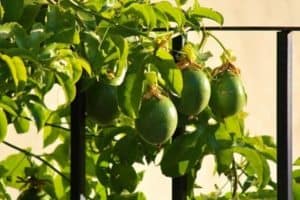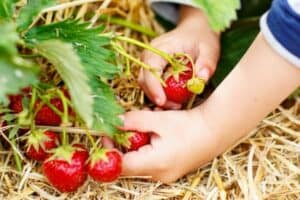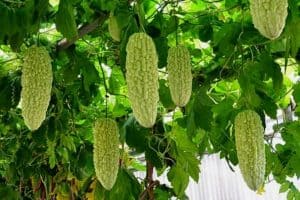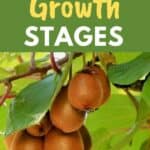Kiwi fruit, also known as Chinese gooseberries, are small oval shaped fruits with fuzzy brown skin and bright green flesh inside.
When it comes to growing kiwi fruit, there are several stages that the plant goes through before the fruit is ready to harvest.
In this article I’ve listed the 6 growth stages of mature kiwi plants along with some tips to help you to grow your own kiwi fruits at home.
This post contains affiliate links. Please read the disclosure for more info.
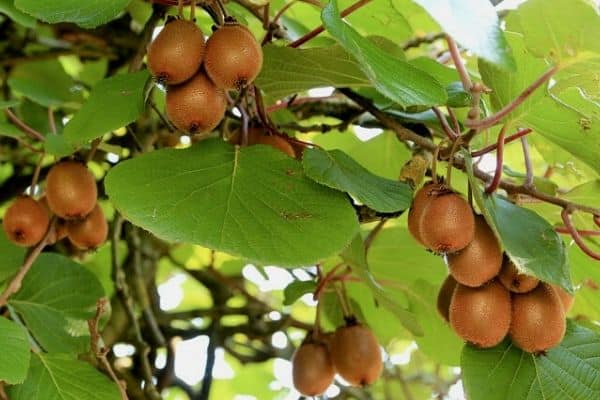
Kiwis (Actinidia deliciosa), grow on long vines so they’re ideal for growing vertically on a trellis or wire fence.
They’re best suited to warm climates with cool winter temperatures and they’re perennial, so they’ll keep coming back year after year.
Kiwis can be grown from seeds, but they’re slow to mature, so it’s best to purchase plants from a nursery or take softwood cuttings from an existing plant.
Kiwifruit are not self-pollinating, so you’ll need at least one male plant for every 5 to 6 female plants in order for them to successfully produce fruit.
According to Britannica, female vines take 4 to 5 years to mature before they start producing fruit, but it’s worth the wait because kiwi vines will continue to bear fruit for 20 years or more.
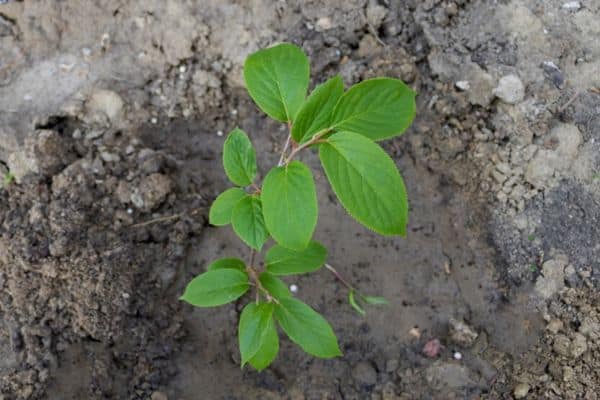
KIWI GROWTH STAGES
Mature Kiwi fruit plants generally go through six stages of growth:
Stage 1 – Bud development
As the plant comes out of the dormant phase the buds will begin to swell and open up.
Kiwi plants are susceptible to frost damage at this stage, so if you live in a colder climate, you’ll need to provide some protection for your plants until the risk of frost has passed. [1]
Stage 2 – Vegetative growth
During this stage, the plant focuses on producing leaves and stems, rather than fruit.
Kiwi plants have a shallow root system so you’ll need to keep them well watered, especially during hot, dry weather.
It’s also a good idea to add a thick layer of mulch around the base of the plants to reduce weeds and help retain moisture.
During this stage you can train the vines to grow up a trellis by tying them loosely to the trellis with soft twine or wire.
Stage 3 – Flowering
After a few months of growth, the kiwi plant will start producing pale yellow flowers.
The number of flowers will depend on how cool the winter temperatures were.
Cooler winters usually result in higher numbers of flowers, which means more fruit will be produced.
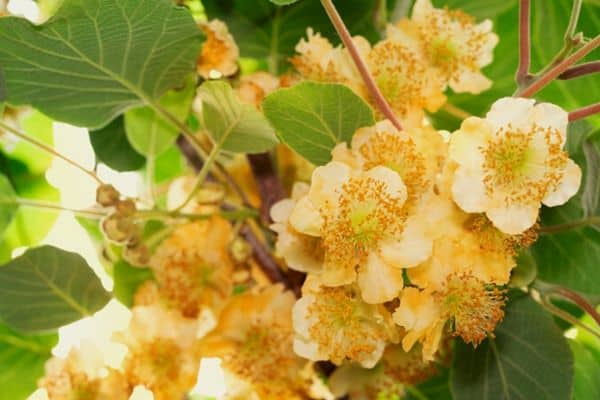
Stage 4 – Fruit formation
Once the flowers have been pollinated, the kiwi fruit will start to form on the vine.
During this stage you’ll need to keep an eye out for pests like mealybugs, aphids, thrips and grubs as these can wreak havoc on the plant and the developing fruit.
You’ll also need to water the plants well during the growing season, especially while the fruit is forming.
Kiwis don’t like soggy, waterlogged soil, so try to avoid over watering and ensure that the soil is well draining.
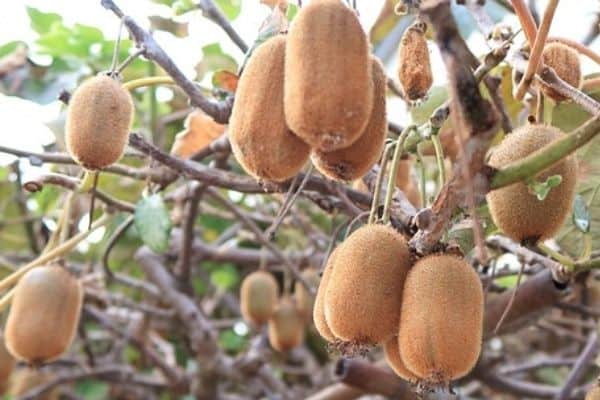
Stage 5 – Maturation and Harvesting
Kiwi fruits are ready to harvest in fall when they’re about 2.75 inches (7 cm) long and 2 inches (5 cm) wide.
The fruits can be picked when they’re still slightly firm and they’ll ripen at room temperature.
Mature kiwi vines can produce more than 33 pounds (15 kg) of fruit, so you’ll have an abundance of fruit to harvest.
Kiwi fruits bruise easily, so handle them carefully after they’ve been harvested.
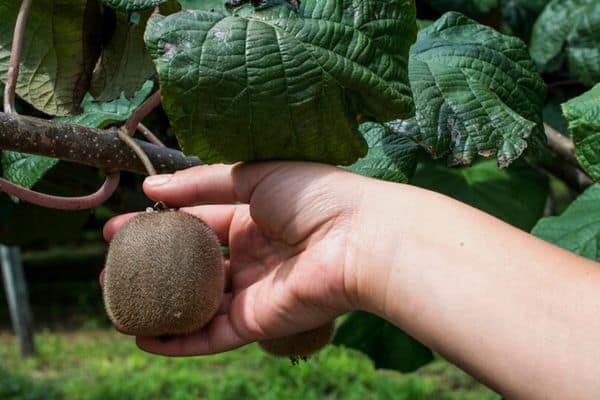
Stage 6 – Senescence
The final stage in the kiwi growth cycle is dormancy.
During this stage, the leaves will fall off and the vines will become dormant over the winter months.
This is a good time to give the vines a hard prune so that they’re ready to start producing new growth in the spring.
Kiwis need a period of cool winter temperatures for at least 500 hours over the winter months to complete their dormant period and trigger fruit production.
Storing and eating kiwi fruits
Ripe kiwi fruits can be stored at room temperature for a few days, or in the refrigerator for up to two weeks.
When it’s time to eat them, you can simply peel off the skin with a sharp knife or scoop out the flesh with a spoon.
Kiwi fruits are incredibly versatile; they can be enjoyed fresh, added to smoothies, or even used to make delicious desserts and jams.
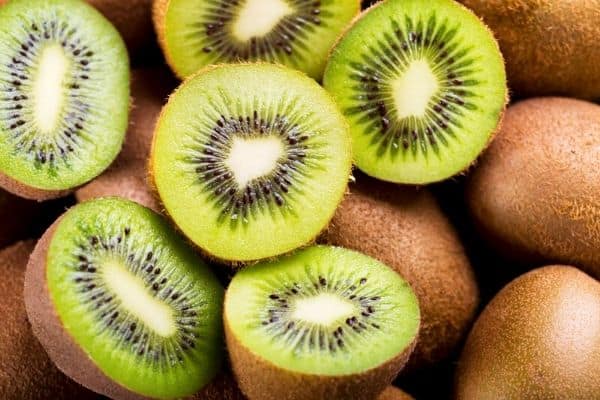
RELATED ARTICLES
So there are the different stages of growth that you’ll see when growing kiwi fruits at home.
It’s important to note that the length of each growth stage can vary slightly depending on the variety of kiwi and the growing conditions.
By understanding the growth cycle, you can ensure that your kiwi plants provide a bountiful crop of delicious fruit.
Have you tried growing kiwis in your garden? Let me know in the comments below.
Are you on Pinterest? I have boards dedicated to Growing Fruit and Vertical Gardening that you may enjoy. You can also find me on Facebook.


